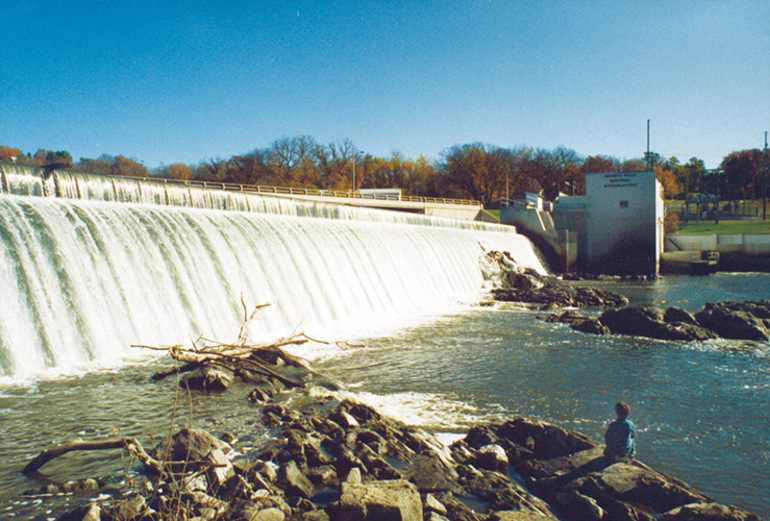A sense of place.
That is one thing which each of the 124 Minnesota cities operating a municipal electric utility has in common. There is something unique about each one.
It’s not surprising. When your bedrock tenet is local control, it stands to reason that your city would be unique. While traveling through the bustling Chicago suburbs the thought often occurs to me – I could be anywhere, maybe Eagan.
That thought is unlikely to intrude when visiting, say, Granite Falls.
Granite Falls is one of six Minnesota municipal electric utilities with a municipally-owned hydroelectric plant. These plants have been churning out power for decades. They are, of course, located on rivers, which normally run the same course year in, and year out. And given the fact that you generally still have to spin metal to make electricity, some of the equipment in many of these plants has also been in service for many decades.
If it works, no sense in spending good money just to change it. And, in some cases, equipment installed years ago was ‘overbuilt,’ meant to last, not be replaced after a few years. Brass fixtures have been polished by numerous hands over the decades—each taking pride in keeping it in good working order.
Any city with a municipal power plant is a fascinating place to visit. You can scoff at the notion of maintaining a century-old building to house electric generators, some of which might have started life pushing a World War II submarine through the ocean, but these units continue to show their worth. The most recent example came during this winter’s polar vortex. With the natural gas system unable to keep up with demand in some areas, diesel-fueled municipal generators rumbled into service. As they have time after time, year after year, decade after decade.
The basic goodness of the design and manufacture of these engines must be acknowledged. You also have to be impressed at the skill of the men who have kept these units in running order over the years. Many a municipal power plant operator treats these engines as if they were his own. Or better.
While largely sidelined by economics, the previous-generation municipal power plant has proven its worth over the years. A new wave of investment is now sweeping the state, driven by, paradoxically, wind energy. A big internal combustion engine with a generator spinning with the crankshaft is a perfect tool for ‘firming up’ a sprawling ‘wind farm.’
You can usually tell the vintage of an engine by its color. Or architecture. It appears the municipal power plant will remain viable (and absolutely necessary for propping up the state’s electric grid, under certain circumstances).
You can still find the power plant, in many cities, by looking for the water tower. Failing that, follow a heavy ‘feeder' line into the center of town.
But most MMUA-member cities don’t have any type of power plant. Yet they retain their unique characters. Maybe it’s a main street with a clock, or a cafe. Or a railroad depot sporting the city’s name, or a ballpark, or an arena. Many of these places border a beautiful lake, or are home to a world-famous business.
Buildings are made from local material: pine, limestone, sandstone. Kasson stone. Chaska brick.
And some places appear to have been forgotten by time. The railroad no longer runs through, the highway took a different route, people left, the elevator shut-down, a church closed its doors. But pride in the place lives on in the hearts of people there. Many hold a common last name – a name that might leave the town but will be forever associated with it.
Many of these places have an interesting history, and thrived at times, if not enjoying a steady trajectory of growth and prosperity.
They are home, to somebody. And home is worth taking care of.
Editor's note: MMUA is adding photos of places to its Flickr page.



Submitted 4 years 7 months ago by Pradeep Mohanty